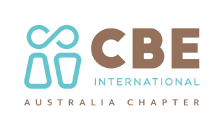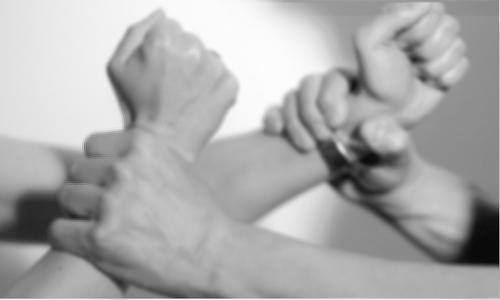Abuse: The Elephant in the Sanctuary
From the very beginning Christians for Biblical Equality (CBE) has endeavored to understand why so many Christian women have encountered abuse, and how the church might become agents of healing and reconciliation. Catherine Clark Kroeger, CBE founder and president emerita, vigorously addressed the challenge of abuse which she encountered early on. As president of CBE, Cathie directed a significant portion of CBE’s energies to this challenge. In 1994, CBE held a conference themed “Women, Abuse, and the Bible.” We were overwhelmed by the number of people who attended this event, and who had experienced abuse in a Christian marriage, family, or church. Within several years of this conference, we had enough material to publish three separate volumes on abuse, gender, and faith. Ultimately, when Catherine Kroeger retired as the first president of CBE, she went on to become founder and president of Peace and Safety in the Christian Home (PASCH), a nonprofit organization devoted to address domestic violence and abuse.
While CBE was established largely by academics to explore the biblical, theological, and historical material on gender, we were inevitably faced with the challenge of addressing abuse as well, simply by sheer numbers of individuals who called upon us for help. Had we been more alert to the prominence of abuse in culture we would not have been caught unaware. Certainly this is the point James Gilligan, a professor of medicine at Harvard, makes in his very helpful book entitled “Violence: Reflections on a National Epidemic”. The prevalence of abuse is likewise noted in Jackson Katz’s book “The Macho Paradox: Why Some Men Hurt Women and How All Men Can Help”.
Based on their ten year study interviewing 24,000 individuals, the World Health Organization believes that somewhere between 15%-71% of the world’s women report being physically or sexually violated in their lives. Their report also suggests that:
- Many women said that their first sexual experience was not consensual. (24% in rural Peru, 28% in Tanzania, 30% in rural Bangladesh, and 40% in South Africa).
- Between 4% and 12% of women reported being physically abused during pregnancy.
- Every year, worldwide, about 5,000 women are murdered by family members in the name of honor.
- Trafficking of women and girls for forced labor and sex is widespread (more widespread than slavery prior to abolition) and often affects the most vulnerable.
- Forced marriages and child marriages violate the human rights of women and girls, yet they are widely practiced in many countries in Asia, the Middle East and sub-Saharan Africa.
- Worldwide, up to 1 in 5 women and 1 in 10 men report experiencing sexual abuse as children. Children subjected to sexual abuse are much more likely to encounter other forms of abuse later in life.
Though groups like the World Health Organization have been assessing the prevalence of abuse for years, Christian churches as a whole are slow to respond to this pervasive problem. For this reason Cathie Kroeger, Nancy Nason Clark, and Barbara Fisher-Townsend published Beyond Abuse in the Christian Home: Raising Voices for Change <http://equalitydepot.com/beyondabuseinthechristianhome.aspx> (Wipf and stock, 2008), to help pastors and churches address abuse. Citing research from interviews with pastors and women parishioners, here is what they found:
Pastors report:
- Pastors believe 1 out of every 5 couples in their congregation is violent.
- 8% feel well-equipped to respond to domestic violence.
- 9% have counseled 5 or more abused women in the last year.
- 83% have counseled at least 1 abused woman.
- 31% have preached 1 sermon on abuse.
- 40% discuss violence in premarital counseling.
Church women report:
- 95% have never heard a sermon on abuse.
- 58% have personally helped an abused woman.
- Many Christian women who have been violated by abusive acts do not feel that the term “abused woman” applied to them. So we have a perception problem, as well.
Though abuse is prevalent, we are not necessarily dealing with it, perhaps because we lack the tools. While many pastors are reluctant to discuss abuse in premarital counseling, there are tools used by churches all over the world to help couples prepare for marriage and to assess for the possibility of violence and abuse.
One of the most widely used premarital inventories, the Prepare/Enrich Program, was developed by David Olson, CEO and Founder of Life Innovations. Olson states that he is seeing more and more egalitarian couples in his work in recent years. Fewer women, he says, are willing to be denied decision making, and more men are open to egalitarian marriages because they perceive the benefits of sharing decision making in marriage. Making decisions as a couple reduces stress for men and leads to greater couple satisfaction, according to Olson.
Olson and his colleagues studied 20,951 couples and determined that there are many factors that impact abuse, including financial stress, couple intimacy, support from family and friends, shared religious values, and more. Yet the most significant indicator was partner dominance coupled with spousal avoidance. When one partner is dominant and the other avoidant, there is a significantly higher incidence of abuse. A power imbalance between males and females is a significant contributor to abuse. This may explain why so many abused women, and those who work with them, are drawn to CBE’s mission.
Mimi Haddad
President CBE International






